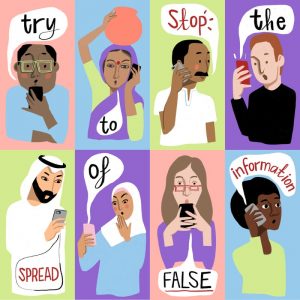
Our way of life has been impacted in ways we never imagined or anticipated. The COVID-19 pandemic has created much confusion and uneasiness within the workplace to say the least, and every workplace is vulnerable to fear, stigma, and worry. From essential workers refusing to report to work out of fear of getting the virus, to remote employees gossiping on social media about who is positive for the virus, and finally employees who dwell on every bit of negative data related to Covid-19. It’s remarkable that we are productive at all. As a result of all these significant disruptions to our personal and work life, it is crucial that as employers, we demonstrate empathy and courage to make reasonable accommodations to help scared and worried employees to cope and feel better.
Manage Fear
Leaders need to find creative solutions to manage fear, despite the fear and anxiety they are experiencing themselves. My point is that hand sanitizer is effective at killing germs but does not dispel myths nor offer comfort to anxious employees who are fearful about contracting the virus or losing their jobs. So, we need to do more than justprovide supplies. As we cycle back and forth between workplace openings and closings based on infection rates, we need the tools and resources to weigh the employees’ health concerns with the employers’ business needs.
Tips to manage fear:
Reduce Stigma
Stigma hurts everyone by creating more fear or anger toward ordinary people instead of focusing on the disease that is causing the problem. According to the CDC, stigma is associated with a lack of knowledge about how COVID-19 spreads, a need to blame someone, fears about disease and death, and gossip that spreads rumors and myths. That is why it is so important to maintain the privacy and confidentiality of those seeking healthcare and those who may be part of any contact investigation. Why is COVID-19 causing so much stigma?
The World Health Organization (WHO) and The Centers for Disease Control and Prevention (CDC) have information about how to reduce stigma: Social Stigma Associated with COVID-19 and CDC Reducing Stigma.
Worry Less
Interacting with others and forming connections is an essential part of staying happy and upbeat. Many of us enjoy being in a busy environment or surrounded by friends and family. But even if you can’t interact face to face, there are still ways to stay connected. Fear and worry about your own health and the health of your loved ones, your financial situation or job, or loss of support services you rely on, are very real feelings. It is crucial to acknowledge that you have these feelings, because guess what – we all do. Schedule calls/chats with family and friends, and stay connected! The Centers for Disease Control and Prevention (CDC) have information about how to worry less and cope with stress: CDC Coping with Stress During COVID-19.
We all need self-care, and to accept that we only have control over what we can control, and we need to worry less on what we can’t control. It is easier said than done, but it can be done with practice and then it’s a healthy habit. Don’t allow yourself to make it a habit to worry. As John Steinbeck once wrote, “A sad soul can kill you quicker, far quicker, than a germ.”
After all, we are all in this together, and how we handle challenges is how we show our character!